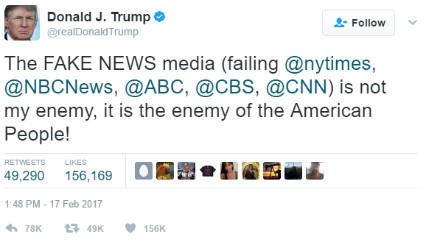On February 17, 2017, the Associated Press (AP) posted an article titled “AP Exclusive: DHS weighed Nat Guard for immigration roundups” [PDF version].1 The author, Garance Burke, reported that the proposal “called for mobilizing up to 100,000 troops in 11 states.” The White House denied the report. The AP stated that it had requested comment on the document, but had received none. Initially, the AP did not release a copy of the draft Department of Homeland Security (DHS) proposal upon which its reporting was based.2
Fortunately, other outlets released the proposal, and the AP would follow [PDF version]. A careful analysis of the proposal — which the White House maintained was not a White House document and not under consideration — does not corroborate the AP’s reporting regarding using the National Guard for immigration roundups. Rather, the proposal takes the position that qualified members of the State National Guard to participate in federal-state agreements under section 287(g) of the Immigration and Nationality Act (INA) “to perform the functions of an immigration officer in relation to the investigation, apprehension, and detention of aliens in the United States.”
Section 287(g) allows federal immigration enforcement to enter into agreements with States or political subdivisions thereof to have State or local employees assist in immigration enforcement. In order for such officers to participate, the Attorney General must find that the employees are “qualified to perform a function of an immigration officer…” Section 287(g)(9) makes explicit that States or political subdivisions thereof cannot be required to participate. Furthermore, the Governor of a State has discretion over the use of State National Guard employees. The proposal obtained by the AP simply says nothing about mobilizing 100,000 National Guard troops to deport aliens in the United States illegally, but rather ask State governors if they want qualified National Guard troops to participate in accord with a section 287(g) agreement.
The point if this is not to defend a proposal that is reportedly not under consideration, but to note that the AP’s reporting was at best sensationalistic, and at worst willfully misleading. Some have claimed that the White House is intentionally leaking proposals and then declining to comment in order to goad the media into posting inaccurate reports.3 Whether that is the case here, the fact is that the AP misrepresented the plain text of the document. Even assuming that the AP is being truthful in its assertion that it asked the White House for comment and was rebuffed, there is no good explanation for the AP’s inability to report accurately on the document that it had in its possession. One is left to wonder if there is a reason that the AP did not immediately post the proposal with the text of its questionable article.
However, as has become a trend, even when the White House has a legitimate grievance, President Donald Trump offers a poor response. The President had two good options on this story. First, he could have left the response to his press office and to the professionals at DHS. Alternatively, the President could have criticized the inaccuracies in the story and offered his comments on what is actually being considered. Instead, the President posted the following remarks to Twitter:

President Trump’s response was both in poor taste and contrary to his interest in countering the AP story and other stories that he may find objectionable.
First, President Trump’s statement conflates his position with the position of all of the American people in stating that the “FAKE NEWS media” is “the enemy of the American People.” As Ben Shapiro at the Daily Wire noted, “we’re playing a dangerous game when our leaders declare their interests identical to those of America, rather than the opposite…”4 With the sometimes hysterical overreactions of many in the media aside, President Trump’s Tweet is unbecoming of the President of a republic. It is indeed possible, and often necessary, to be critical of both bad reporting and the President’s response.
Second, President Trump’s Twitter commentary distracts from the actual issue he has with the media. If we take the AP story as an example, the President’s commentary made the story his generalized critique of the media instead of his qualms with a specific story or piece of reporting. While this may be music to the ears of his most ardent supporters, it does little to show those who are not already inclined to believe that every complaint he renders on Twitter is legitimate. President Trump showed with his recent discussion of section 212(f) of the INA [see blog] that he is more than capable of explaining his position in his unique style. He should consider that approach with regard to criticizing specific stories he finds inaccurate or disagreeable instead of making generalized and overheated statements on Twitter.
- Burke, Garance, “AP Exclusive: DHS weighed Nat Guard for immigration roundups,” apnews.com, (Feb. 18, 2017)
- Shapiro, Ben, “Fake News Or White House Manipulation? Media Reports Draft Trump Plan For 100K Anti-Illegal Immigration Enforcement Force, Trump Denies.” Dailywire.com, (Feb. 18, 2017)
- Id.
- Shapiro, Ben, “Trump Calls Press ‘Enemy Of The American People.’ No President Should Do That.” Dailywire.com, (Feb. 17, 2017)





